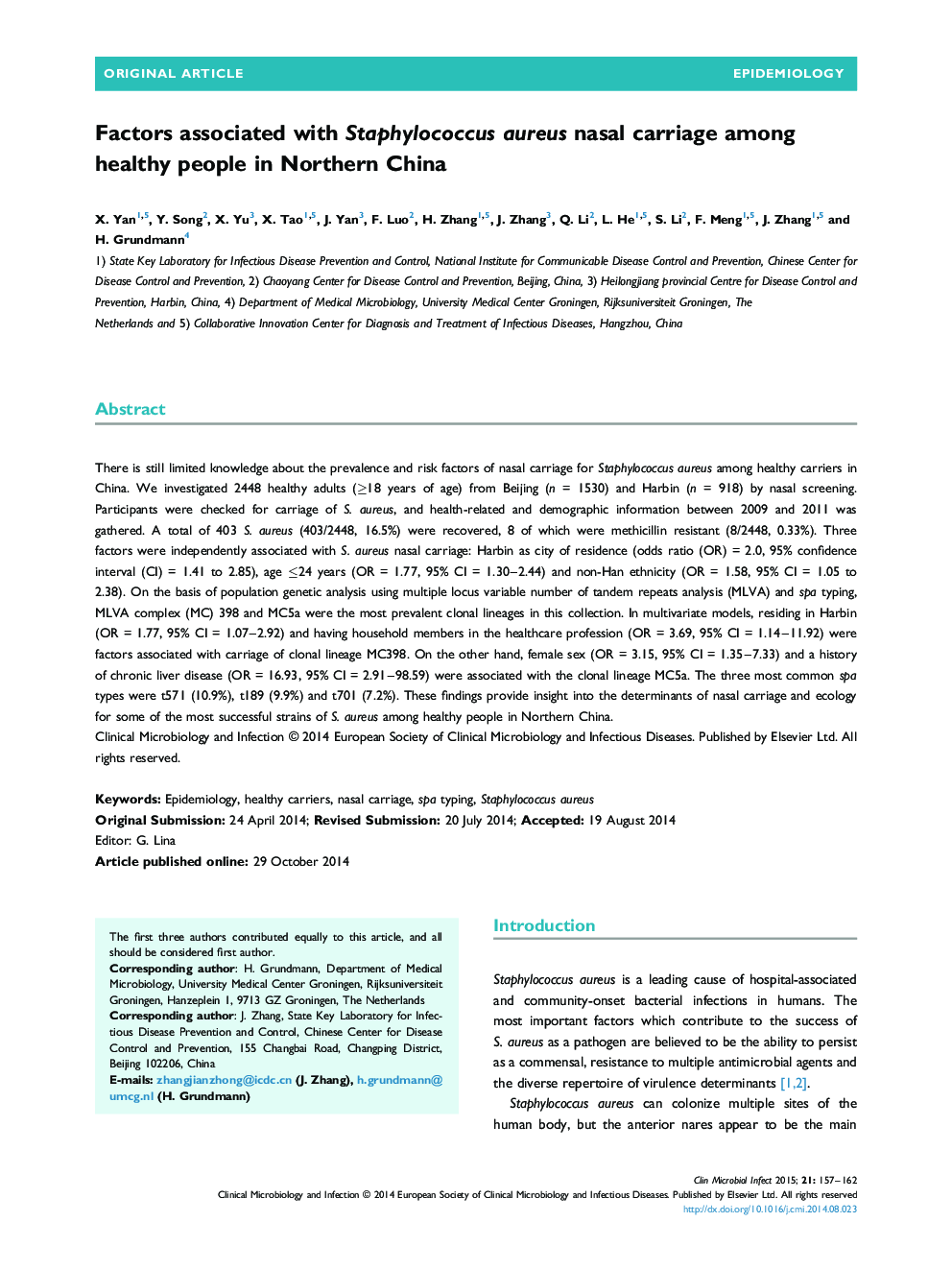| Article ID | Journal | Published Year | Pages | File Type |
|---|---|---|---|---|
| 6129722 | Clinical Microbiology and Infection | 2015 | 6 Pages |
Abstract
There is still limited knowledge about the prevalence and risk factors of nasal carriage for Staphylococcus aureus among healthy carriers in China. We investigated 2448 healthy adults (â¥18 years of age) from Beijing (n = 1530) and Harbin (n = 918) by nasal screening. Participants were checked for carriage of S. aureus, and health-related and demographic information between 2009 and 2011 was gathered. A total of 403 S. aureus (403/2448, 16.5%) were recovered, 8 of which were methicillin resistant (8/2448, 0.33%). Three factors were independently associated with S. aureus nasal carriage: Harbin as city of residence (odds ratio (OR) = 2.0, 95% confidence interval (CI) = 1.41 to 2.85), age â¤24 years (OR = 1.77, 95% CI = 1.30-2.44) and non-Han ethnicity (OR = 1.58, 95% CI = 1.05 to 2.38). On the basis of population genetic analysis using multiple locus variable number of tandem repeats analysis (MLVA) and spa typing, MLVA complex (MC) 398 and MC5a were the most prevalent clonal lineages in this collection. In multivariate models, residing in Harbin (OR = 1.77, 95% CI = 1.07-2.92) and having household members in the healthcare profession (OR = 3.69, 95% CI = 1.14-11.92) were factors associated with carriage of clonal lineage MC398. On the other hand, female sex (OR = 3.15, 95% CI = 1.35-7.33) and a history of chronic liver disease (OR = 16.93, 95% CI = 2.91-98.59) were associated with the clonal lineage MC5a. The three most common spa types were t571 (10.9%), t189 (9.9%) and t701 (7.2%). These findings provide insight into the determinants of nasal carriage and ecology for some of the most successful strains of S. aureus among healthy people in Northern China.
Related Topics
Life Sciences
Immunology and Microbiology
Microbiology
Authors
X. Yan, Y. Song, X. Yu, X. Tao, J. Yan, F. Luo, H. Zhang, J. Zhang, Q. Li, L. He, S. Li, F. Meng, J. Zhang, H. Grundmann,
